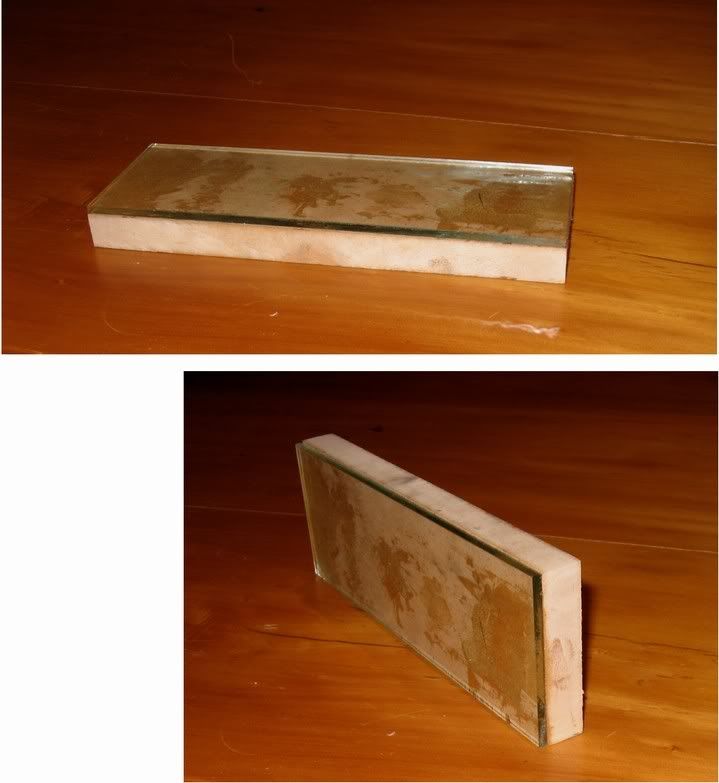Derek Cohen (Perth Oz)
Established Member
For several years, since I began using HNT Gordon woodies, I have set the blade using a hardwood block, as recommended by Terry Gordon.
See: http://www.hntgordon.com.au/bladesettingsmoothtry.htm
For the past few months I have been using a different type of setting block, and it has provided significant benefits for setting both wooden and metal mallet-adjusted smoothing planes for fine shavings.
The setting block is a glass sheet glued to a MDF backing.

I had concerns that the hard glass may damage/fracture a sharp edge, but so far my experience is that this does not occur. I guess I am trying to explain why, and the only answer I can come up with is that I am both gentle in the way I do it, and that the smoothness of the glass surface does not "grab" the edge the way a metal surface might.
I certainly do not just drop the blade through the mouth opening. I place it carefully and let it rest on the glass, then press the wedge in firmly or tighten the lever cap screw, as indicated. The blade projection that results is far more consistent than when I use a wooden block, and the shavings are finer. It is a simple matter to set the plane up for thicker shavings at this stage (with a gentle tap of the mallet).
Anyone else tried this?
Regards from Perth
Derek
See: http://www.hntgordon.com.au/bladesettingsmoothtry.htm
For the past few months I have been using a different type of setting block, and it has provided significant benefits for setting both wooden and metal mallet-adjusted smoothing planes for fine shavings.
The setting block is a glass sheet glued to a MDF backing.

I had concerns that the hard glass may damage/fracture a sharp edge, but so far my experience is that this does not occur. I guess I am trying to explain why, and the only answer I can come up with is that I am both gentle in the way I do it, and that the smoothness of the glass surface does not "grab" the edge the way a metal surface might.
I certainly do not just drop the blade through the mouth opening. I place it carefully and let it rest on the glass, then press the wedge in firmly or tighten the lever cap screw, as indicated. The blade projection that results is far more consistent than when I use a wooden block, and the shavings are finer. It is a simple matter to set the plane up for thicker shavings at this stage (with a gentle tap of the mallet).
Anyone else tried this?
Regards from Perth
Derek
































